Today was a vineyard visit & Sitges.
This was a longer scheduled day. We had everybody meet for a 9 AM bus and we were off to Eudald Massana Noya (a vineyard) followed by the beach town of Sitges.
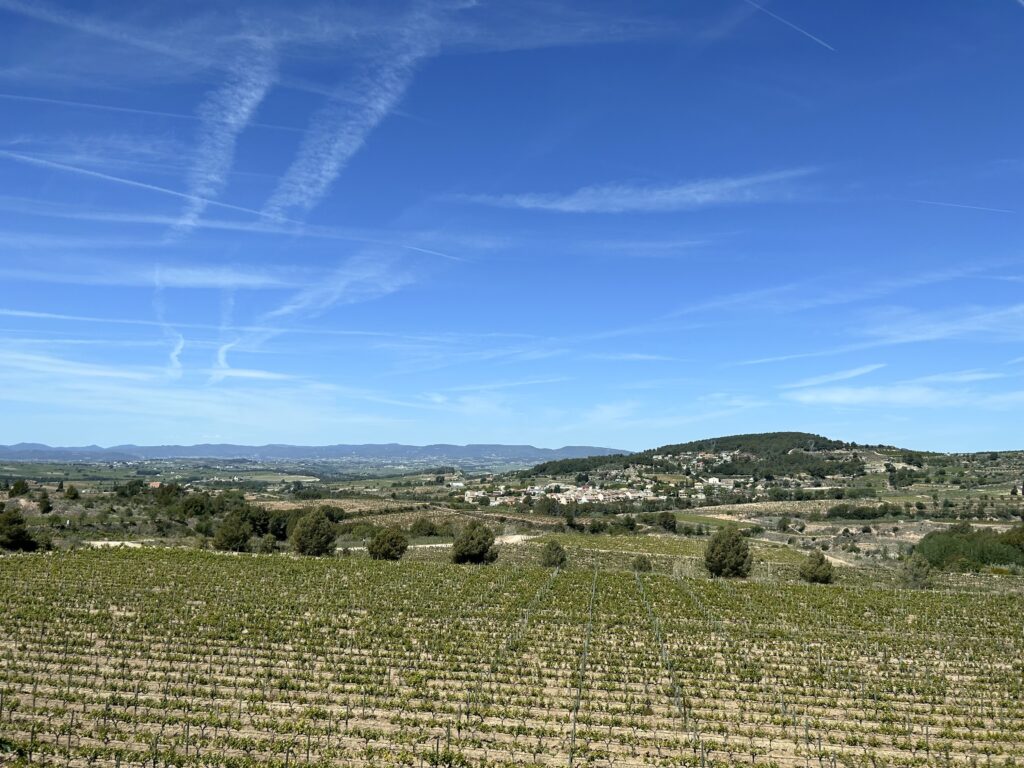
The Vineyards
We had a nice ride to the vineyard. It was very scenic as we came into the small villages with acre after acre of vines. Our guide on our grape-to-wine journey was Alberto.
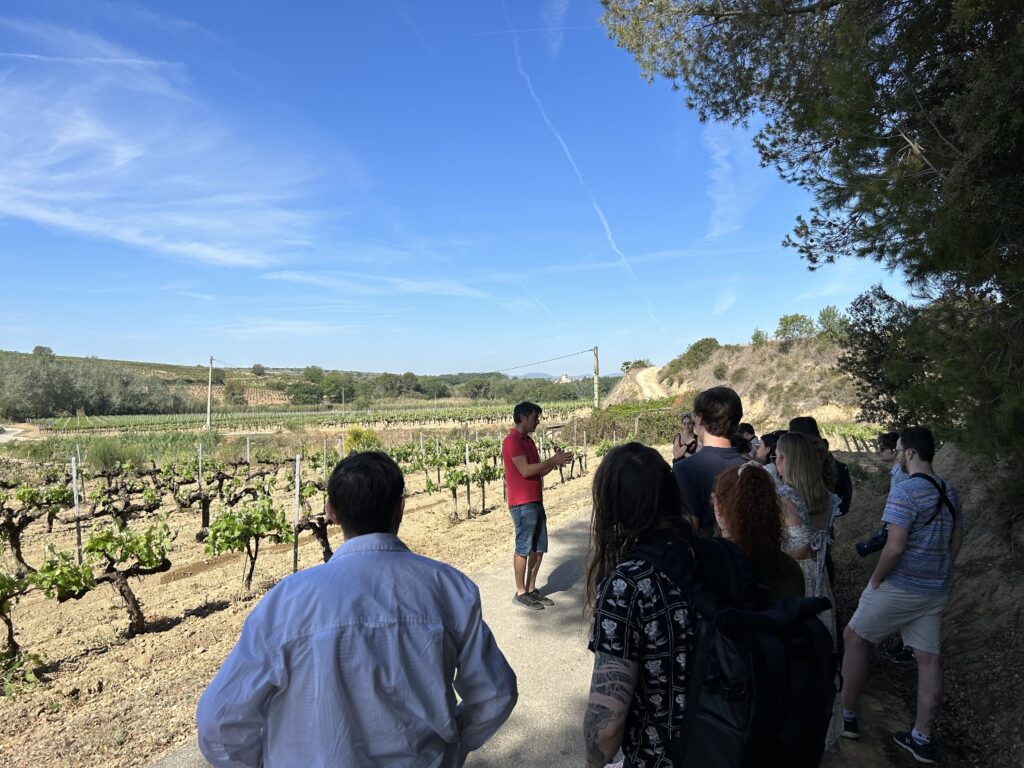
Alberto discussing the vines
Alberto discussed the impact of different altitudes on grapes, types of grapes, how the shape of the vines has slowly been altered to accommodate more modern picking techniques, threats to the grapes and vines as well as the wine-making technique. He also explained their strategy for sampling the grapes across locations and stages of development to determine the grapes’ sugar content which then, after fermentation, determines the alcohol content of the wine produced. The results determine what wines can be made from a given crop. Often certain areas of grapes are designated for certain winemakers or companies.
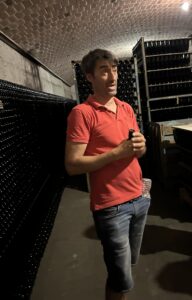
Alberto explains the (wine) aging process
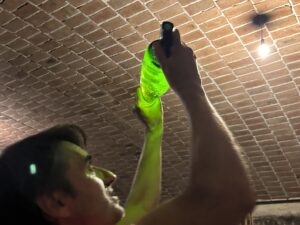
Sediment in aging wine
After the tour of the vines themselves, we moved into the building where we learned about the aging process, the methods for removing sediment (once the wine has fermented) and how the wine is bottled. At nearly every stage of the process, Alberto also explained how the techniques have either remained the same or been modernized.
The main wine Alberto discussed was Cava. Cava is a type of sparkling wine and the region we were in tends to make a sweeter version and a dryer version. Alberto actually demonstrated drinking wine from a Perron, a glass bottle with a spout that you pour into your mouth (without spilling!). I imagine it takes quite a bit of practice to get it right! It is probably best to learn with a non-staining wine like the Cava!
The vineyard provided a lovely “standing lunch,“ as they call it, of several meats, cheeses, fresh bread and crackers. They also showed us how to cut a tomato in half and squish it all over the bread and then drizzle it with olive oil. This is a very common tapas in Spain! We also had a really good dessert.

View Coming Into Sitges
We then reboarded the bus and headed into Sitges. The beach is beautiful. We did a walking tour with Eva, though I think many of us had some seriously aching feet at the time (the vineyard tour was long). But it is a lovely little beach town and there was a lot of local history to be had. We saw a bar/restaurant (Chiringuito) that is supposed to be the first beach bar in Spain (possibly all of Europe). I found it interesting to know that many of the larger homes, which are now small hotels, were built by people that made their money in the “New World.”
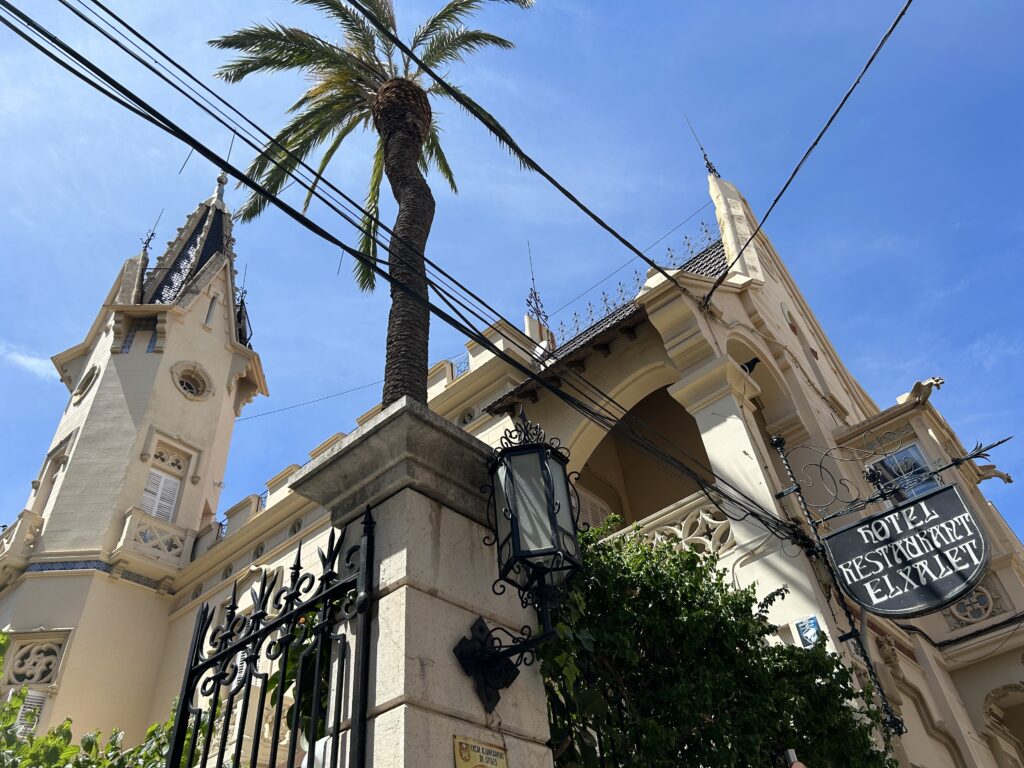
Sitges Private Home Turned Hotel
We had several hours before we had to meet the bus. Teresa and I had some refreshments at Chiringuito while we enjoyed ocean views and we then waded into the Mediterranean to cool ourselves off.
For dinner, Teresa and I tried the restaurant Piola. We think it is quite possible this may have been the Denny’s of tapas bars. We ordered a Tapas for two platter at only €28 (total) and the “expensive” wine at €3.95 a glass. Regardless, the food was good… even though the server could not identify all of the Tapas on our plate!
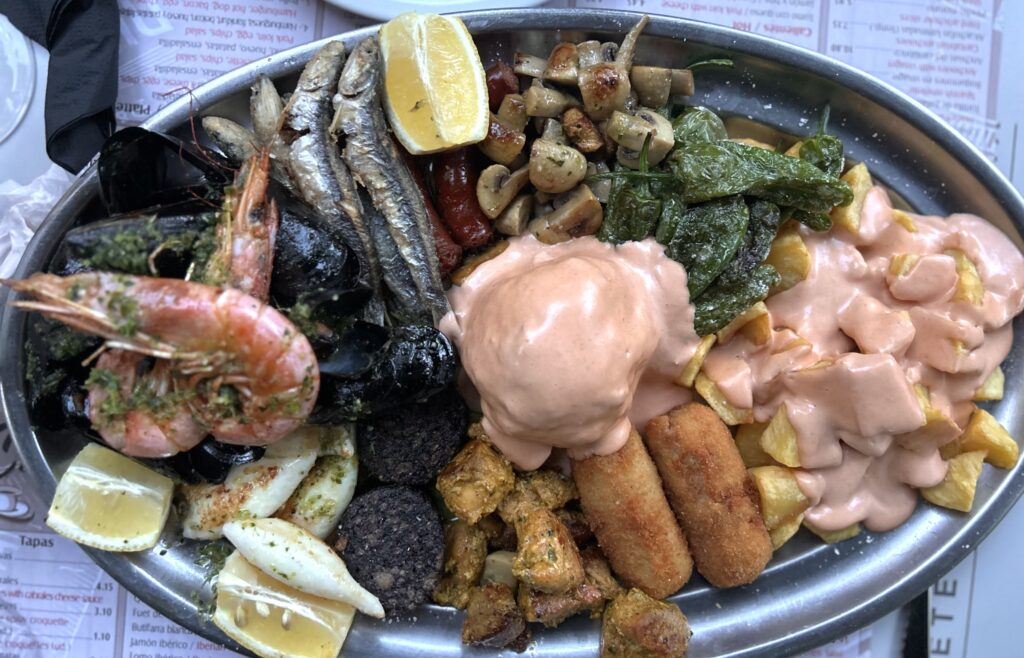
Crazy Tapas Platter
We had the added entertainment of cyclist after cyclist trying to park (or slam!) their bike into the last (broken) spot on the bike share rack in front of us. It was a little wrong, but it just kept getting funnier with each person. We presume the bike share app listed that spot as open. After their failed attempt at parking the bike, each person then frantically scrolled through the app on their phone and then determinedly took off.
Free entertainment is often the best entertainment!













